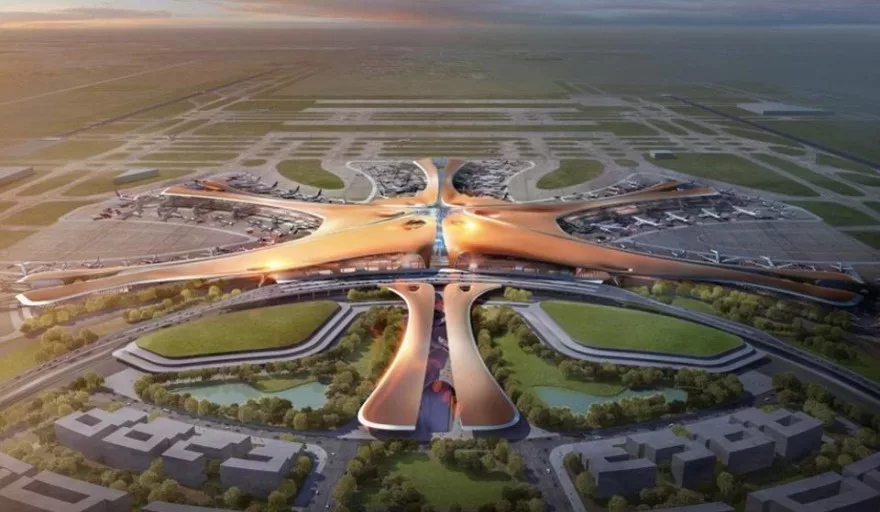It is no secret that Asia is facing a huge deficit in transport infrastructure. With populations growing apace and rapid economic development facilitating a surge in consumers with disposable income, demand for all modes of travel is soaring.
According to the Asian Development Bank (ADB), Asia Pacific as a region requires some $8.4 trillion in financing if its transport needs are to be satisfied.
ADB’s President Takehiko Nakao said in September that current investment levels are roughly half of what is needed, but that this gap presents huge opportunities for public and private enterprises alike.
The bank itself is playing a lead role in providing financial impetus for projects across APAC, including a $335 million loan to Pakistan to develop a bus rapid transit system in Peshawar and $400 million to boost Azerbaijan’s rail network.
The region is awash with large-scale transport infrastructure developments, work which will help address its chronic need for boosted capacity. Here, we look at two ongoing megaprojects – Beijing Daxing International Airport and the Jakarta to Bandung high-speed rail line.
BEIJING DAXANG AIRPORT
Currently under construction and lying 46 kilometres south of Tiananmen Square is a monster of an airport terminal.
Slated for opening later in 2019, Beijing Daxing International Airport will become the world’s biggest single-terminal airport, a $14 billion-dollar investment made up of 220,000 tonnes of steel and eight runways.
It is reported that 40,000 workers are currently on-site at Daxing, finishing off a terminal equivalent to the size of around 100 football pitches.
The airport’s futurist design is the work of the late architect Zaha Hadid and has been nicknamed ‘starfish’ by much of the Chinese media because of its five concourses connected to a main hall. It will also boast convenience, the furthest gates being no more than 600 metres away from security.
In January, the airport welcomed its first test plane, a 42-minute flight from Beijing Capital Airport that marked the beginning of a two-month assessment period to examine the quality of Daxing’s runway and air traffic control facilities.
Once fully operational it should be able to serve more than 100 million passengers a year (although official targets state a modest 72 million), relieving some of the enormous pressure currently on Beijing Capital International Airport which is running at full capacity.
It is thought that China Eastern Airlines and China Southern Airlines will relocate to Daxing on its completion, accounting for a large share of the new airport’s traffic.
It is not inconceivable that Beijing could be home to the two busiest airports in the world, its current transit hub second only to America’s Hartsfield-Jackson in Atlanta.
Indeed, China is set to replace the USA as the world’s largest aviation market by 2024, a key driver behind APAC’s overall projected increase in passengers. The International Air Transport Association forecasts an additional 1.8 billion annual passengers will be transported to, from and within Asia Pacific for an overall market size of 3.1 billion by 2035.
Away from China, India will displace the UK for third place in 2025, while Indonesia and Japan will be ranked fifth and seventh respectively.
JAKARTA TO BANDUNG RAIL
In Indonesia, a 150-kilometre high-speed rail line is being built between capital city Jakarta and textile manufacturing hub Bandung.
The project is a joint venture between a consortium of Indonesian state-owned companies and China Railway International, which fended off competition from Japan to secure a 40 percent share in the development.
Indonesian authorities had previously favoured a medium-speed rail link that would have cost 40 percent less, however, they reverted to the original proposal. Construction on the project began in 2016 and is expected to be completed in 2021, costing around $5.9 billion and providing employment for approximately 40,000 people.
Along the route will be four stations, the most significant being in Gambir, an economic centre close to Monas that is predicted to handle huge passenger numbers. Another station will be based at West Bandung, close to a newly established tourism hub in West Java.
Once finished, trains are expected to reach speeds of up to 250 kilometres per hour, carrying around 44,000 passengers a day on average during the project’s early operational years.
The major benefit will be drastically reduced journey times, the current three- to five-hour haul forecast to be cut down to just 36 minutes.
The development runs alongside recently-announced intentions from the Indonesian government to make rail travel more affordable and reduce congestion on the country’s strained road network.
As well as freezing fares, authorities and state railway company PT Kereta Api Indonesia are implementing an infrastructure, maintenance and operation agreement designed to revive old rail routes throughout 2019.





















